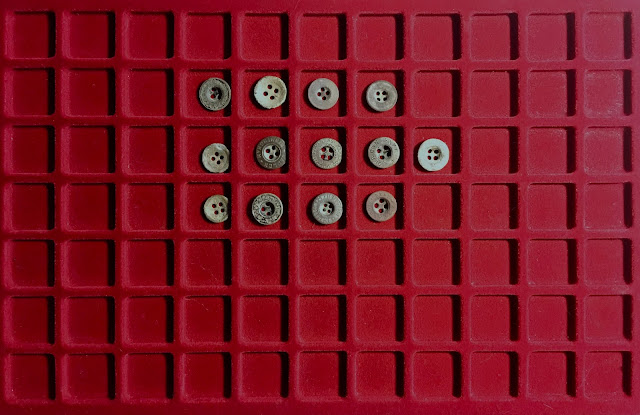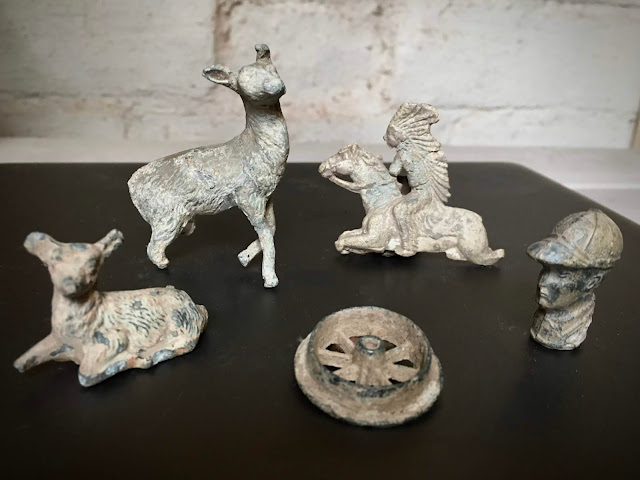Stepping back onto a ploughed field for the first time in well over a decade was a special moment. All the memories that I'd accumulated during the many thousands of hours spent upon them in the past came flooding back. Those special finds that had kept me awake at night. Those thoughts that had accompanied the moments of their discoveries. And those journeys into the ancient history of England that they'd taken me on.
When I followed along in the footsteps of my wife as she crisscrossed the first field that she had ever stepped out upon metal-detector in hand, I realised that I was already following along in the footsteps of my own long-established routines. As her finds came along I was already constructing a framework to slot them into, was already establishing patterns of sense for them and was already predicting what might come soon — or even next.
 |
| If Polly's Parlour keeps throwing a couple of these my way on every single trip, then I will fill this tray one day! |
When I ventured out alone I discovered that one particular field (now known as Polly's Parlour) was really promising. There wasn't a lot to go on at first but soon a pattern began to emerge. Shirt buttons were found but at a rate that I had never encountered before. I know that shirt buttons are not exactly the most exciting find in the world but the point is that they were there in some quantity. To my way of thinking, when anything turns up in an arable field 'in series' and in discreet areas or along certain lines of direction then it means that they were probably deposited there not through the rather uniform mechanics of muck spreading, but were lost or discarded on-site.
 |
| And if one of these turns up on every other trip then I will amass a serious collection! |
When I began to find lead and pewter toys in addition to the shirt buttons, I thought this rather interesting. Shirt buttons alone would not have had the power to pull me back, let me tell you! These toys must be clear evidence of children at play within the field. I have never encountered any field that has ever produced so very many. In point of fact, I had found a few lead toys before and thinking back, these were all from a demolished 19th Century cottage site and its gardens, but I could not remember a single one that had come from any of my open fields.
There are two deer, a Native American warrior on horseback, the head of the Victorian jockey, 'Fred Archer' and Judy's first proper find — the wheel from a toy train. That they have absolutely zero monetary value in such states as they exist now, well that's really not the point to me — for they do possess a certain aesthetic value that I find really satisfying. They remind me of a collection of Roman figurines and votive objects in many ways. The missing limbs. The uniform colour of their cream-coloured patinas. All this binds them together really nicely as a collection and I do hope that I find more and more of them.
There was the top of a trefoil spoon — 17th Century. A very corroded gilt-brass belt mount used as a suspension point for something — Medieval. The lead cloth seal carrying the Arms of Ausburg, Germany — 1500 or later.
I really don't think that this particular field is going to produce much in the way of truly ancient objects and I do not care overmuch about that, to be honest. Just being out and about in the fresh air, with my dogs frolicking about in the river whilst I occupy myself with the pleasant task of digging up lead toys and brass shirt buttons — well, that's quite enough ...
For now!





No comments:
Post a Comment